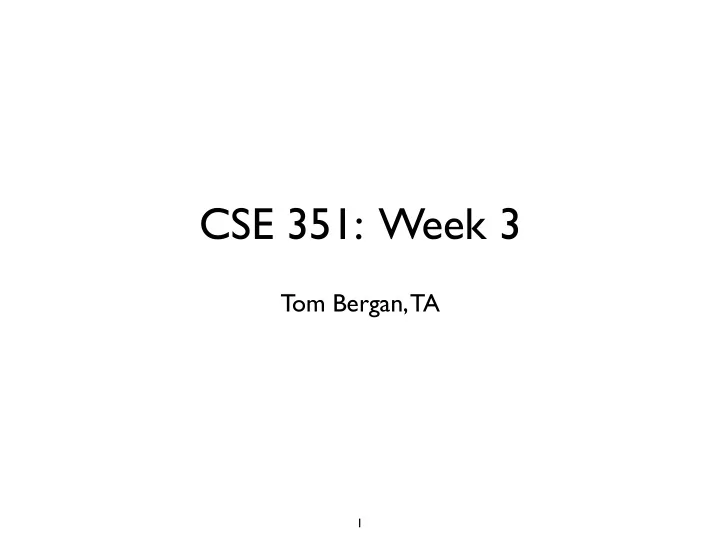

CSE 351: Week 3 Tom Bergan, TA 1
Today • Questions on Lab 1 or Hw 1? • Floating point • Lab 2 quickstart 2
The most important facts about floating-point numbers • They are approximate • Smaller numbers are more precise - think significant digits - I’ll show you want I mean .... 3
Floating point When you run this code float x = 1.3; printf(“%f\n”, x); printf(“%.15\f”, x); It prints 1.300000 1.299999952316284 4
Floating point When you run this code float accountBalance = 1.30; printf(“%f\n”, x); printf(“%.15\f”, x); probably not a good idea - instead, maybe use: It prints “binary-coded decimal” or “densely packed decimal” 1.300000 1.299999952316284 5
Floating point This code computes 1.3*10, right? float x = 1.3; for (int i=0; i < 9; ++9) x += 1.3; if (x == 13.0) printf(“same!\n”); else printf(“different!: %.15f\n”, x); Not exactly ... it prints: different!: 13.0000000953674316 6
Floating point Here’s a big number float x = (float)((uint64_t)1 << 63); printf(“%f\n”, x); printf(“%.15f\n”, x); We can represent x precisely! (it’s a power of 2) The code above prints 9223372036854775808.000000 9223372036854775808.000000000000000 7
Floating point Now let’s add a small number to a big number float x = (float)((uint64_t)1 << 63); x += 0.25; printf(“%.15f\n”, x); The 0.25 disappears: 9223372036854775808.000000000000000 8
Floating point Doubles are more precise than floats float x = 0.1; // 32-bit floating point double z = 0.1; // 64-bit floating point printf(“%.30f\n”, x); printf(“%.30f\n”, x); But still approximate ... the above code prints: 0.100000001490116119384765625000 0.100000000000000005551115123126 9
Floating point Floating point inaccuracy is hard to reason about - how much error does ‘+’ introduce? - this is a hard numerical analysis problem - compilers make this problem even harder - changing (x*1.3 + y*1.3) to 1.3*(x + y) could produce a different result See the work of William Kahn for the gory details www.cs.berkely.edu/~wkahan (Turing award winner for defining IEEE floating point numbers) 10
Today • Questions on Lab 1 or Hw 1? • Floating point • Lab 2 quickstart Demo 11
Recommend
More recommend